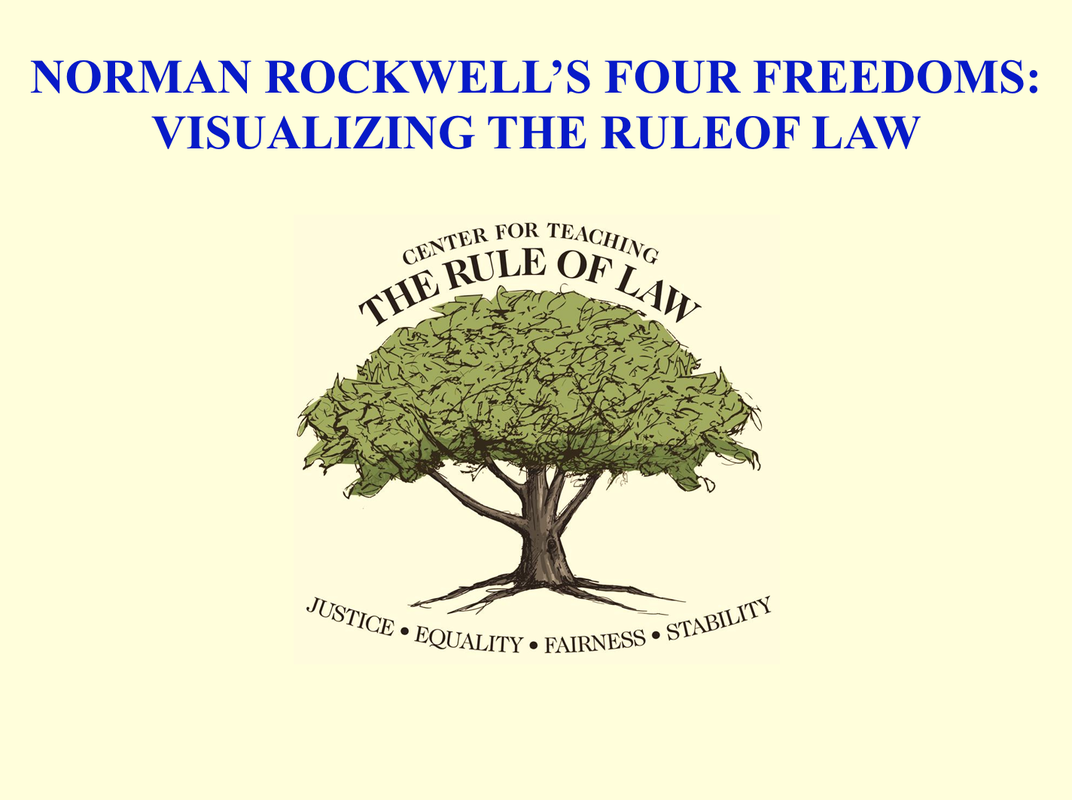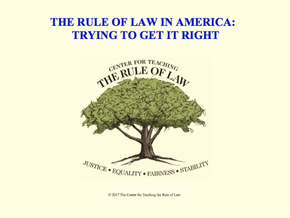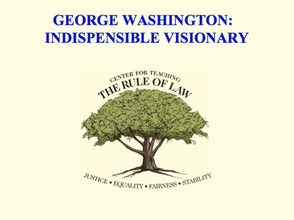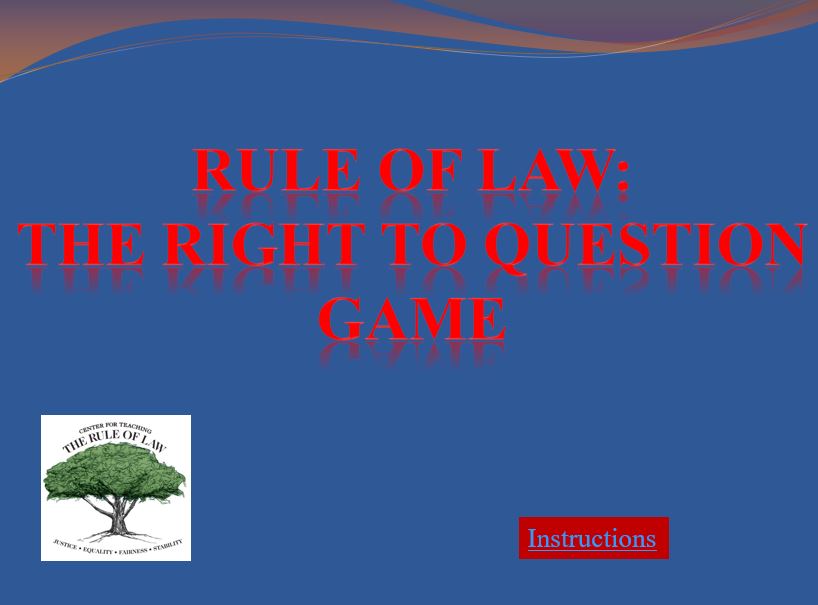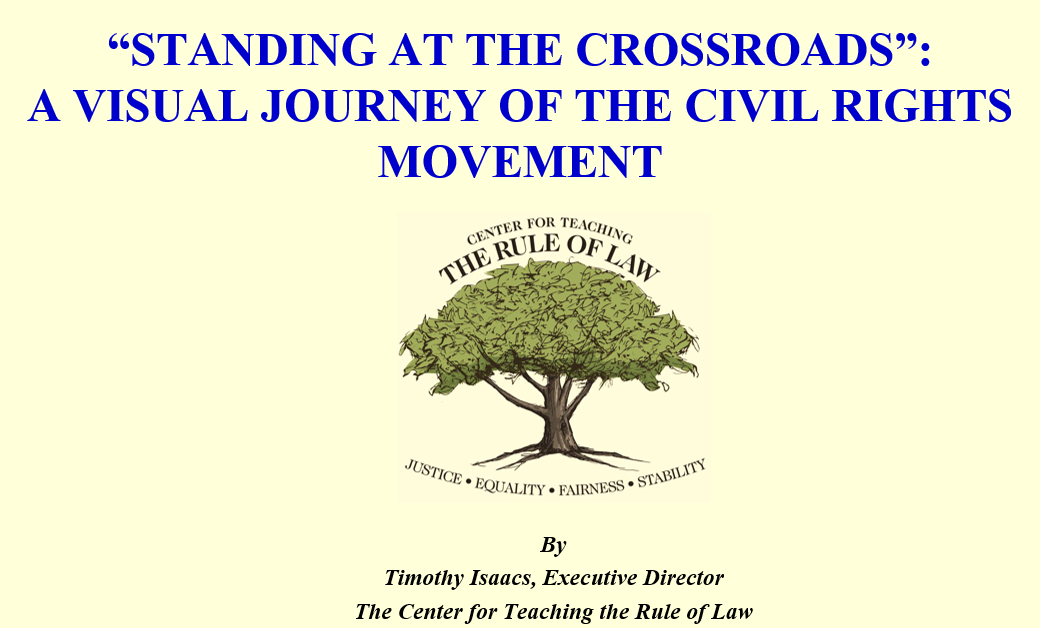PowerPoint Library
(click on the images to download)
The Rule of Law & The Visual ArtsThis lesson discusses the rule of law as seen through the visual arts. Students will look at statues, buildings, and works of art and how they represent the rule of law. Items include Lady Justice, the U.S. Supreme Court building, and even the Center's logo.
|
George Washington:
|
Norman Rockwell's Four Freedoms: Visualizing the Rule of LawOriginally a presentation for the Norman Rockwell exhibit at the Taubman Museum of Art, this PowerPoint uses selected works by Rockwell to address the rule of law, civil rights, and human rights in America and the world.
|
|
This PowerPoint provides an overview of the promise and disappointment of the rule of law in America. Beginning in the 17th century and continuing through the succeeding centuries to the present, we seek to show the promise of the rule of law and the consequences when reality fails to live up to the promise of the ideal.
|
This PowerPoint provides an overview of the relationship between the English Magna Carta of 1215 and the Rule of Law as practiced in the United States today.
|
A slightly shorter version of “George Washington: Man of Vision, Visions of the Man” PowerPoint, this version focuses specifically on Washington’s advocacy of the rule of law. This presentation also addresses the tension between Washington’s view of government and Jefferson’s view, tension inherent in the rule of law between those who see the rule of law as a formal instrument that keeps government working and those who see the rule of law as a reflection of fundamental of principles human rights and justice.
|
|
This PowerPoint presents the ABC's of the Rule of Law in a Quiz Show format. Presented in an "answer and question" format, the topics covered are aimed at middle school civics and high school government students.
|
Inspired by Robert Johnson’s famous 1936 blues anthem “Standing at the Crossroads,” this PowerPoint uses the visual arts to depict the African American journey from “The Great Migration” of the early 20th century to the present. Along the way we will look at art, architecture, sculpture, cartoons, and monuments – yes, monuments. In the end, we hope you will come to appreciate that the African America experience isn’t just captured in words and deeds, but also in some very powerful, moving, and provocative art – art that tells the story of a journey that brings American society, again, to a crossroads.
|
An introduction to the concept of the Rule of Law beginning with its origins in classical thought through the medieval period to the Enlightenment and the American Revolution and modern political thought.
|



